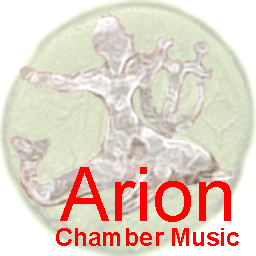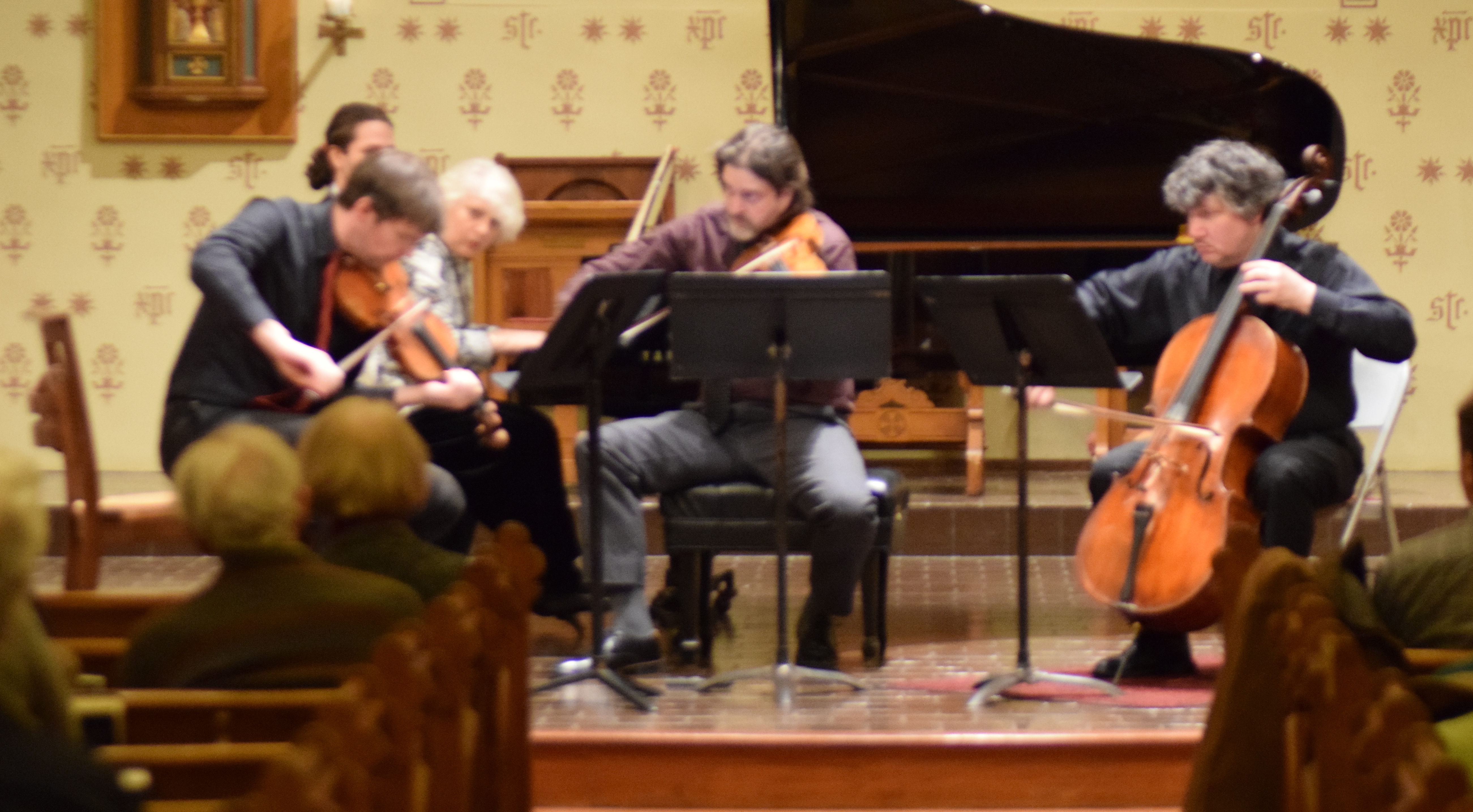 |
 |
|
2019/2020 concerts Other Arion seasons |
Friday February 1, 2019 at 7:30 pmChrist and St. Stephen's Church, 120 West 69th Street, NYCTickets are $30 (open seating). Students under 25 with ID: $15 at the door.Jesse Mills (violin), Inessa Zaretsky (piano), Arthur Dibble (viola) and Robert La Rue (cello) perform a pair of mid-20th century duos -- the Shostakovich Cello Sonata (1934) and Luigi Dallapiccola’s Tartiniana seconda for violin and piano (1956) -- followed by Fauré’s great C minor Piano Quartet (1883).
Notes on the Program Dmitri Shostakovich (1906-1975) Sonata for Cello and Piano in D minor, Op. 40 (1934) It was in the midst of this emotional chaos that The "Sonata for Cello and Piano in D minor, Op. 40" was written in the late summer of 1934. The Cello Sonata is often described as an early work, but it is better viewed as a transition from his early work in which he seeks a new, simplified and expressive musical language that he could call his own. The work steadily gained a wider and more appreciative audience as Shostakovich's distinctive sound solidified in later works. That language would gain wide acclaim just three years later in Shostakovich's Fifth Symphony. The first movement features unusual tonal shifts that move from the piano to the cello as the tension created in the opening resolves into a gentler second theme and, late in the movement, an unusual slow-motion and pianissimo recapitulation of the movements themes. The second movement opens with a driving ostinato and is then joined by a delicate theme presented in widely spaced octaves on the piano. The movement then turns witty as a light-hearted cello theme is pantomimed in the piano’s brittle high register and well established classical gestures are set askew with sudden lurches through unrelated keys. The movement ends suddenly soon after the driving ostinato of the opening returns. The third movement, Largo, provides an early example of a mood Shostakovich would later use in his most powerful works, as icy dissonances evoke bleak landscapes that lead to reflective introspection. The dark background provided by the piano contrasts with rhapsodic, vocal foreground in the cello until the music fades. This sets up a very different set of contrasts in the brief and caustic, yet exuberant and colorful, finale, a variation of a rondo in which the main playful theme changes as it returns. In the second variation on the theme the piano lets loose in a helter-skelter cadenza that veers into unexpected tonal highways. When it appears a third time it brings the movement to a brilliant climax.Luigi Dallapiccola (1904-1975) Tartiniana seconda for violin and piano (1956) Luigi Dallapiccola is generally credited as being the first Italian serial composer. He is also credited with developing techniques that allow lyrical serial compositions that retain tonal styles and preserve the melodic line in ways that serialism’s detractors claim is absent in such music. Dallapiccola stretches those techniques to the limit as he applies them to the work of Giuseppe Tartini in Tartiniana seconda. It was, however, violinist Sandro Materassi who encouraged Dallapiccola to reimagine Tartini’s Baroque violin sonatas (he wrote over 100 of them) as modern serialist works. Materassi supploed Dallapiccola with copies of many of Tartini's compositions. Dallapiccola proceeded to manipulate Tartini's diatonic themes into tone rows while preserving the emotional character, style, and instrumental color of Tartini's original works.The success of an earlier Tartiniana (1951) that led, five years later, to Tartiniana Seconda. The result is an accomplished work that fuses the Baroque with modern contrapuntal sensibilities. The first movement (Pastoral) opens with a sad and lyrical theme that intertwines with portions of itself. The second movement features virtuosic violin techniques that Tartini, an acclaimed violinist who sought to dazzle audiences with technically demanding ornamentation, including double stop trills that remain difficult even for modern violinists. The rhythmic second movement, Bourree, includes a full complement of Baroque ornamentation on the violin. Tone row-style manipulations of the theme grow ever more complicated in the third movement (Presto leggierissimo), but the movement still scampers and frolics. The final movement ("Variations") stretches the limits of serialist thematic manipulation by counterposing different variations from Tartini's Sonata in A minor against each other. Gabriel Fauré, considered by many to be the most influential French composer of the late 19th and early 20th century, is sometimes compared with his German contemporary, Johannes Brahms. The comparison is apt at several levels. Both wrote successfully in a wide range of musical genres. Both produced large numbers of popular songs. Both are particularly well known for choral works (especially their frequently performed Requiems). And the piano quartets each composed are cornerstones of the chamber music repertoire. |
